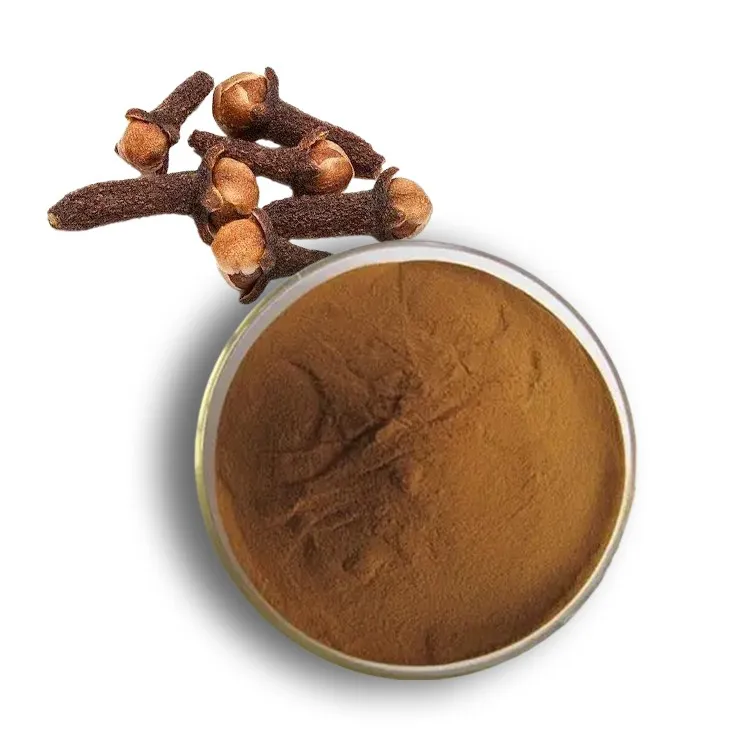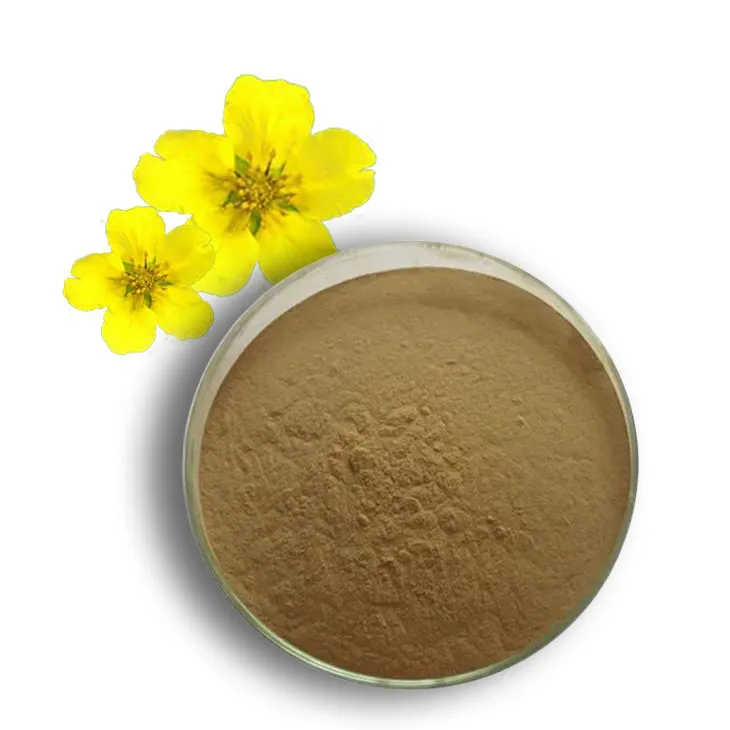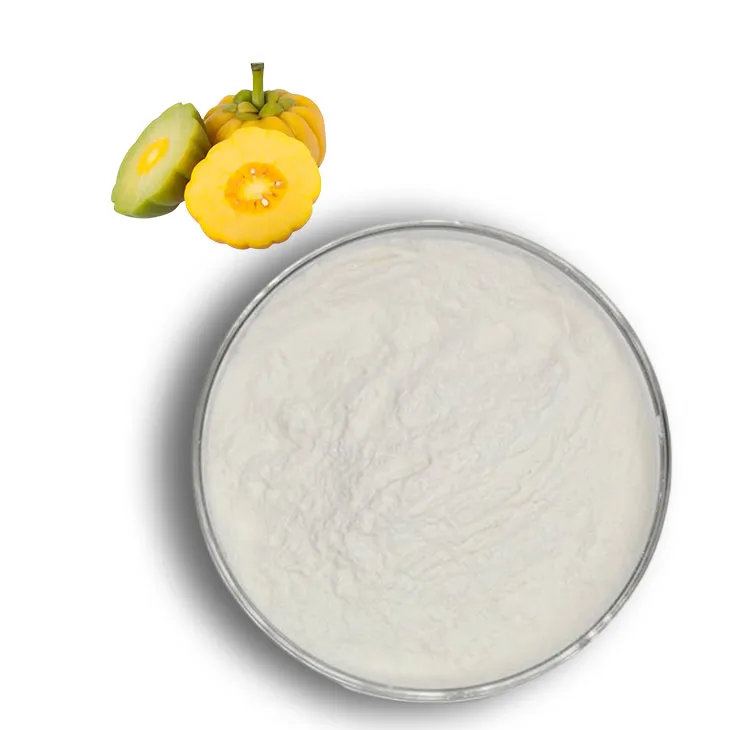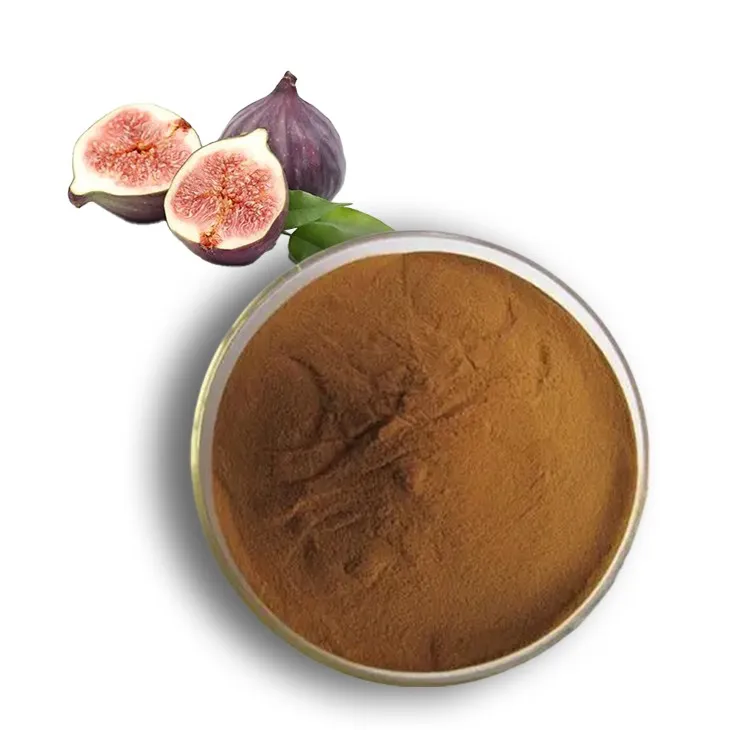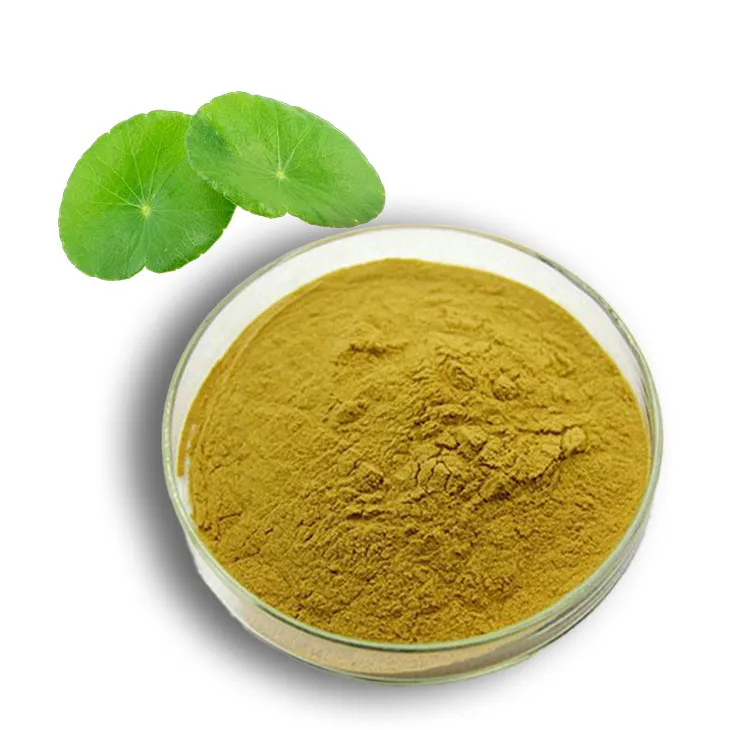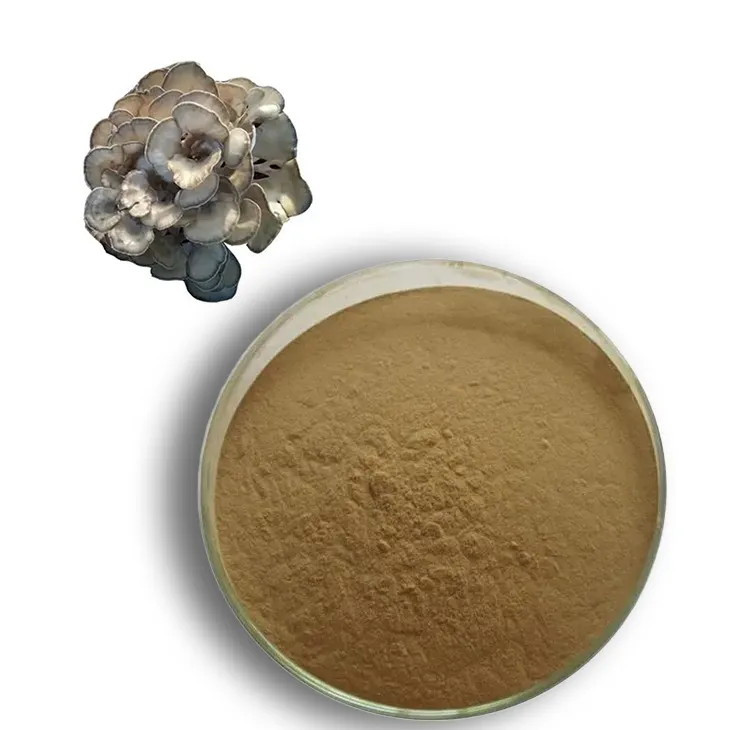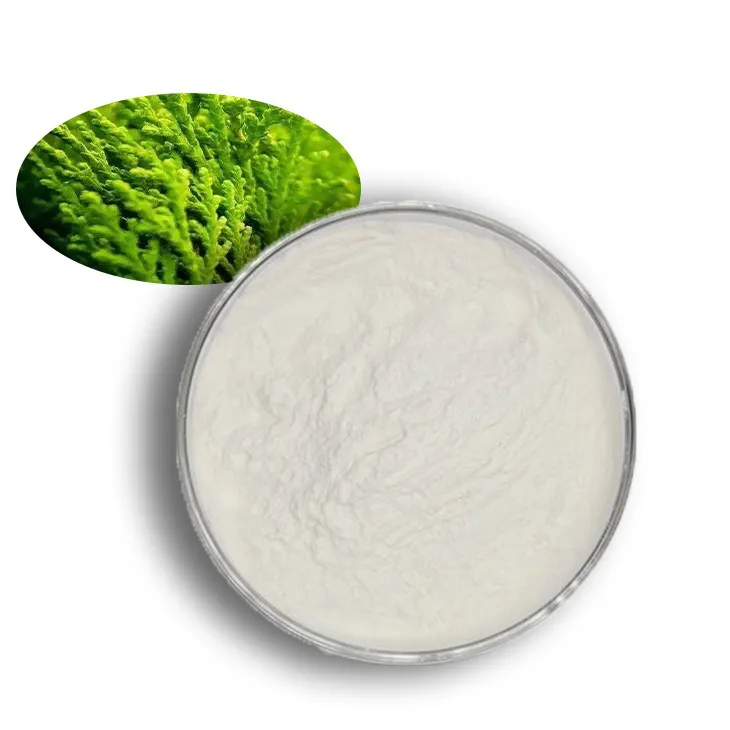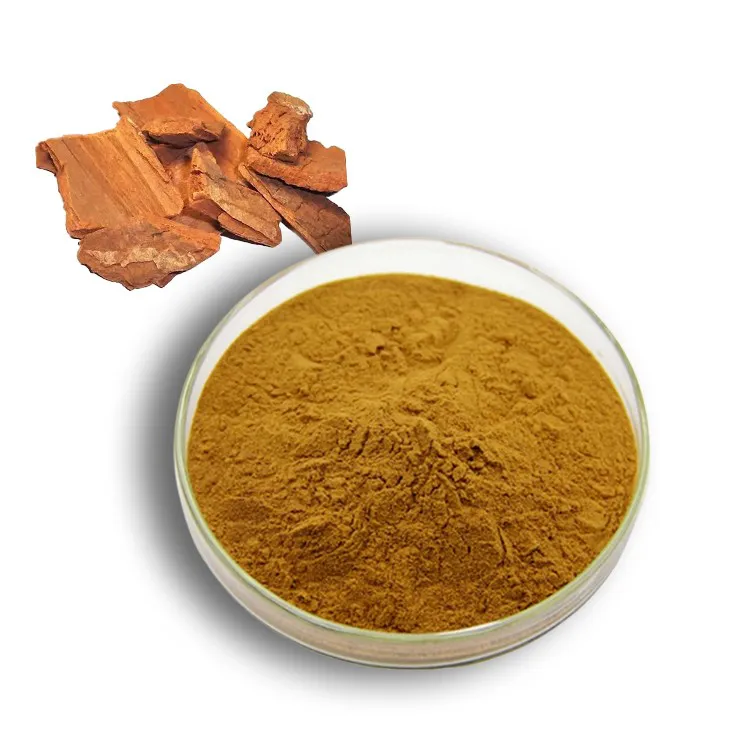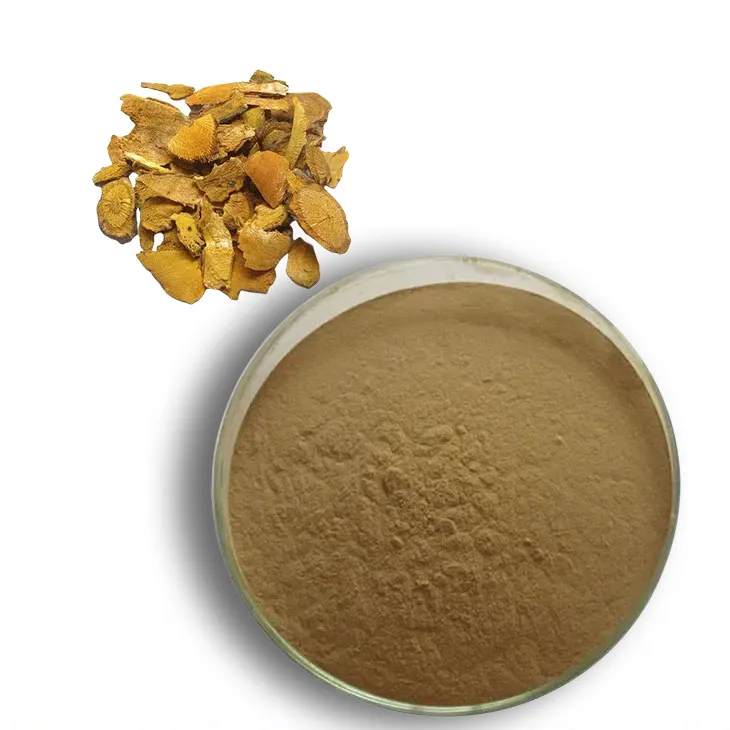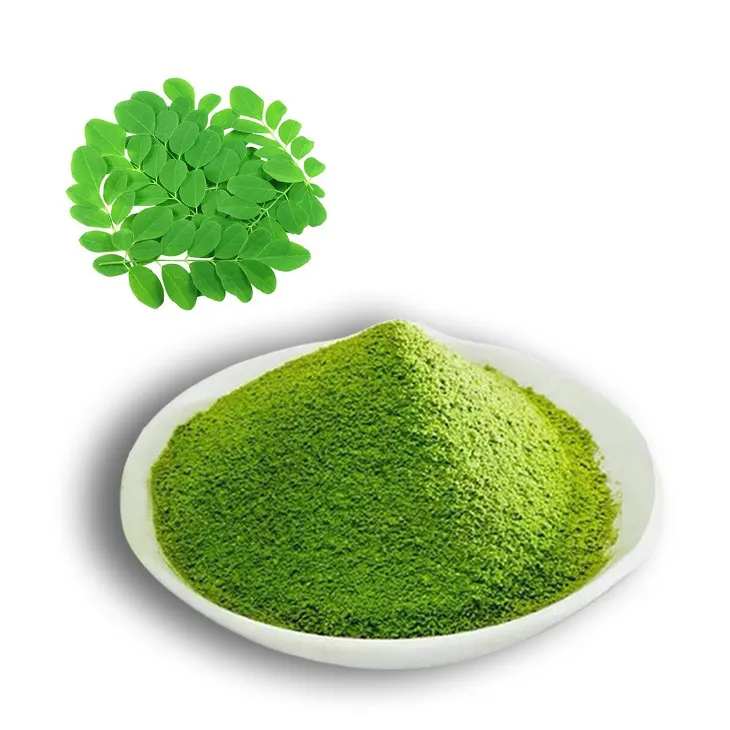- 0086-571-85302990
- sales@greenskybio.com
Unveiling the Chemical Secrets: Active Constituents of Sophora Flavescens Root Extract
2024-07-03
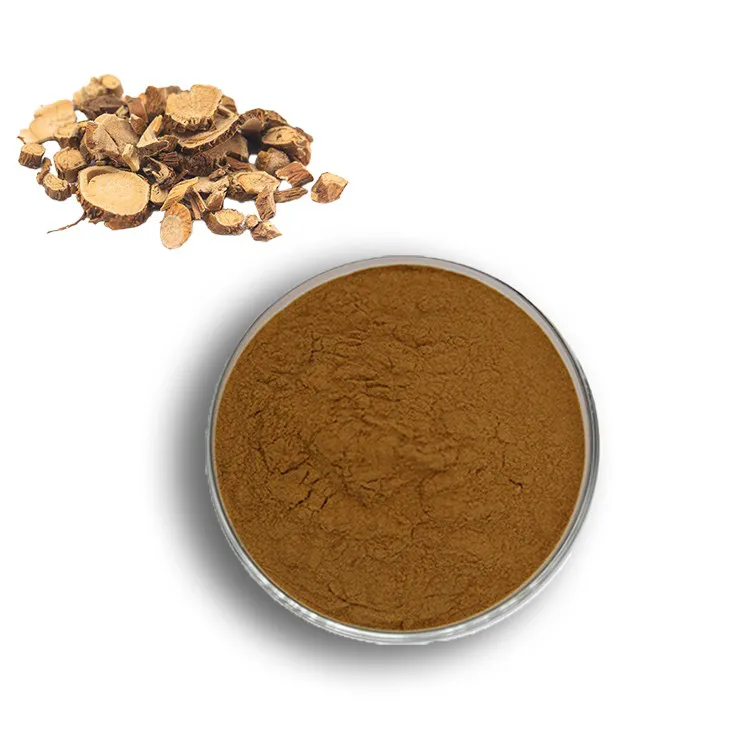
1. Botanical Description and Origin
1. Botanical Description and Origin
Sophora flavescens, commonly known as the "Ku Shen" in traditional Chinese medicine, is a perennial herb belonging to the Fabaceae family. It is native to China and can also be found in other parts of Asia, including Korea and Japan. The plant typically grows in mountainous regions, thriving in well-drained, sandy, or loamy soils.
The Sophora flavescens plant is characterized by its compound leaves, which are pinnately divided with numerous leaflets. It produces small, yellow flowers that grow in clusters and are followed by elongated, flattened pods containing seeds. The root of the plant, from which the extract is derived, is long, thick, and yellowish-brown in color.
The root of Sophora flavescens has been used for centuries in traditional Chinese medicine for its various medicinal properties. It is harvested in the spring or autumn, cleaned, and then dried for use. The extraction process involves removing the bark and grinding the root into a fine powder, which is then extracted using water or a hydro-alcoholic solution to obtain the active components.
The origin of Sophora flavescens is closely tied to its use in traditional medicine, with its first recorded use dating back to the "Shennong Bencao Jing" (The Divine Farmer's Materia Medica), one of the earliest Chinese pharmacopoeias. Its widespread use and the recognition of its medicinal value have contributed to its continued cultivation and research for potential therapeutic applications.
2. Traditional Uses and Medicinal Properties
2. Traditional Uses and Medicinal Properties
Sophora Flavescens Root Extract, also known as "Ku Shen" in traditional Chinese medicine, has a rich history of use dating back to ancient times. The plant, belonging to the Fabaceae family, is native to various regions of China and has been extensively used in traditional Chinese medicine for its diverse medicinal properties.
Botanical Description and Origin
Sophora Flavescens, commonly known as "Kushen" or "Sophora root," is a perennial shrub that thrives in dry, sandy, and rocky soils. Its root bark is the part most commonly used in traditional medicine.
Traditional Uses
In traditional Chinese medicine, Sophora Flavescens Root Extract is used for a variety of purposes, including:
1. Dysentery and Diarrhea: It has been used to treat dysentery and diarrhea due to its antimicrobial and anti-inflammatory properties.
2. Skin Diseases: The extract is applied topically for the treatment of skin conditions such as eczema and dermatitis.
3. Fever and Infections: It is used to reduce fever and fight infections due to its immune-boosting and antimicrobial effects.
4. Liver and Kidney Diseases: It is believed to have hepatoprotective and nephroprotective effects, aiding in the treatment of liver and kidney disorders.
5. Cancer Treatment: Some traditional practices include its use as an adjunct therapy in cancer treatment to alleviate symptoms and side effects of chemotherapy.
Medicinal Properties
The medicinal properties of Sophora Flavescens Root Extract are attributed to its active constituents, which include:
1. Antimicrobial Activity: It has been shown to inhibit the growth of various bacteria and fungi, making it useful in treating infections.
2. Anti-inflammatory Effects: The extract exhibits anti-inflammatory properties, which can help reduce inflammation and swelling.
3. Immunomodulatory Action: It can modulate the immune system, enhancing its response to pathogens and diseases.
4. Hepatotoxicity Protection: It has been found to protect the liver from damage caused by various toxins and diseases.
5. Nephroprotective Effects: It may help protect the kidneys from damage and improve kidney function.
The traditional uses and medicinal properties of Sophora Flavescens Root Extract have been passed down through generations and continue to be an integral part of traditional Chinese medicine. Its multifaceted therapeutic potential has led to ongoing research to better understand its mechanisms of action and to explore its potential in modern medicine.
3. Chemical Composition and Active Constituents
3. Chemical Composition and Active Constituents
Sophora flavescens root extract, commonly known as "Ku Shen" in traditional Chinese medicine, is rich in a variety of bioactive compounds that contribute to its medicinal properties. The chemical composition of this extract is quite complex and includes a diverse array of alkaloids, flavonoids, triterpenoids, and polysaccharides, among others.
Alkaloids:
The most well-known and studied group of compounds in Sophora flavescens are the alkaloids, particularly matrine, oxymatrine, and sophoridine. These alkaloids are believed to be responsible for many of the plant's therapeutic effects, such as anti-inflammatory, antiviral, and immunomodulatory activities.
- Matrine: A quinolizidine alkaloid that has been extensively studied for its anti-inflammatory and neuroprotective properties.
- Oxymatrine: A derivative of matrine with potential hepatoprotective and antifibrotic effects.
- Sophoridine: Another alkaloid with potential antiviral and immunomodulatory properties.
Flavonoids:
Flavonoids are a class of plant secondary metabolites known for their antioxidant and anti-inflammatory properties. Sophora flavescens contains several flavonoids, including:
- Kaempferol: A flavonol with antioxidant and anti-inflammatory activities.
- Quercetin: Another flavonol with known anti-inflammatory and immunomodulatory effects.
Triterpenoids:
Triterpenoids are a large group of compounds that have diverse biological activities, including anti-inflammatory, anticancer, and antimicrobial properties. Some of the triterpenoids found in Sophora flavescens include:
- Soyasapogenol B: A triterpene with potential anti-inflammatory and anticancer properties.
Polysaccharides:
Polysaccharides from Sophora flavescens have been shown to have immunomodulatory and antitumor effects. They are complex carbohydrates that can stimulate the immune system and have potential as therapeutic agents.
Other Compounds:
In addition to the main groups of compounds mentioned above, Sophora flavescens also contains a variety of other bioactive constituents, such as:
- Phenolic acids: These compounds are known for their antioxidant properties.
- Sterols: Plant-derived sterols that may have anti-inflammatory and cholesterol-lowering effects.
The synergistic action of these various compounds is believed to contribute to the overall therapeutic effects of Sophora flavescens root extract. However, further research is needed to fully elucidate the mechanisms of action and to identify the most bioactive constituents for specific medicinal applications.
4. Pharmacological Activities and Mechanisms
4. Pharmacological Activities and Mechanisms
Sophora Flavescens Root Extract, also known as "Ku Shen" in traditional Chinese medicine, has been the subject of extensive research due to its diverse pharmacological activities and underlying mechanisms. The following are some of the key pharmacological effects and the mechanisms by which they are believed to operate:
1. Anti-inflammatory Activity:
Sophora Flavescens Root Extract contains compounds such as matrine and oxymatrine, which have been shown to exhibit anti-inflammatory properties. These compounds may modulate the immune response by inhibiting the production of pro-inflammatory cytokines and reducing the activity of inflammatory cells.
2. Antioxidant Effects:
The extract is rich in antioxidants that can neutralize free radicals and prevent oxidative stress. This property is attributed to the presence of flavonoids and other phenolic compounds that can protect cells from damage and slow down the aging process.
3. Hepatoprotective Properties:
One of the traditional uses of Sophora Flavescens Root Extract is in the treatment of liver diseases. The hepatoprotective effects are thought to be due to its ability to protect liver cells from damage, promote liver regeneration, and reduce the levels of liver enzymes in the blood.
4. Antimicrobial Activity:
Research has shown that the extract has antimicrobial properties, which can be effective against a range of bacteria and fungi. This is likely due to the presence of active constituents that can disrupt the cell walls of microbes and inhibit their growth.
5. Neuroprotective Mechanisms:
Sophora Flavescens Root Extract has been found to have neuroprotective effects, which may be beneficial in the treatment of neurological disorders. The neuroprotective activity is believed to be due to its antioxidant properties and its ability to modulate neurotransmitter systems.
6. Anti-tumor Potential:
Some studies have suggested that the extract may have anti-tumor effects. The active constituents are thought to inhibit the growth of cancer cells and induce apoptosis, the process of programmed cell death.
7. Immunomodulatory Effects:
The extract has been shown to modulate the immune system, enhancing its function in some cases and suppressing it in others. This dual action may be beneficial in treating autoimmune diseases and conditions where the immune system is overactive.
8. Cardiovascular Benefits:
Sophora Flavescens Root Extract has been reported to have positive effects on cardiovascular health, including the ability to lower blood pressure and improve blood circulation. The mechanisms may involve the modulation of vascular tone and the reduction of oxidative stress in the cardiovascular system.
9. Gastrointestinal Protection:
The extract may protect the gastrointestinal tract by reducing inflammation and promoting the healing of ulcers. Its mucosal protective properties can be beneficial in treating gastrointestinal disorders.
10. Anti-allergic Action:
Some constituents of the extract have been shown to inhibit the release of histamine and other mediators involved in allergic reactions, suggesting a potential use in treating allergic diseases.
The pharmacological activities of Sophora Flavescens Root Extract are multifaceted, and ongoing research continues to uncover new mechanisms and potential therapeutic applications. The synergistic effects of its various active constituents contribute to its broad range of health benefits.
5. Clinical Studies and Applications
5. Clinical Studies and Applications
Clinical studies and applications of Sophora Flavescens Root Extract (SFRE) have been growing due to its diverse medicinal properties and potential therapeutic benefits. SFRE has been extensively used in traditional Chinese medicine for centuries, and modern research is beginning to validate these traditional uses with scientific evidence.
5.1 Gastrointestinal Disorders
Clinical trials have demonstrated the efficacy of SFRE in treating gastrointestinal disorders such as inflammatory bowel disease (IBD) and diarrhea. Studies have shown that SFRE can reduce inflammation, improve gut barrier function, and modulate the gut microbiota, leading to symptomatic relief and improved quality of life for patients with IBD.
5.2 Hepatoprotective Effects
SFRE has been found to have hepatoprotective properties, with clinical studies indicating its potential in treating liver diseases such as hepatitis and liver cirrhosis. The extract's ability to protect liver cells from oxidative damage and to promote liver regeneration has been highlighted in several clinical studies.
5.3 Anticancer Applications
While still in the early stages of research, preliminary clinical studies suggest that SFRE may have potential as an adjunct therapy in cancer treatment. The extract's rich content of bioactive compounds, such as matrine and oxymatrine, has shown to inhibit cancer cell growth and induce apoptosis in various cancer cell lines.
5.4 Immunomodulatory Effects
Clinical studies have also explored the immunomodulatory effects of SFRE. The extract has been shown to modulate the immune system by enhancing the activity of immune cells and regulating the production of cytokines, which can be beneficial in conditions characterized by immune dysregulation.
5.5 Neuroprotective Properties
Although more research is needed, some clinical studies have suggested that SFRE may possess neuroprotective properties. The extract's ability to cross the blood-brain barrier and its antioxidant and anti-inflammatory activities could make it a potential candidate for the treatment of neurodegenerative diseases.
5.6 Dermatological Uses
Topical applications of SFRE have shown promise in dermatological studies. The extract's anti-inflammatory and antimicrobial properties make it a potential treatment for skin conditions such as eczema, psoriasis, and acne.
5.7 Formulations and Dosages
Clinical studies often use SFRE in various formulations, including capsules, tablets, and infusions. The dosages vary depending on the condition being treated and the form of the extract used. It is crucial to follow the recommended dosages and consult with healthcare professionals to ensure safety and efficacy.
5.8 Limitations and Future Research
While the clinical studies on SFRE are promising, there are limitations to the current body of research. Many studies have small sample sizes, and long-term safety and efficacy data are still lacking. Future research should focus on larger, randomized, controlled trials to further validate the clinical applications of SFRE.
In conclusion, the clinical studies and applications of Sophora Flavescens Root Extract are expanding as more research uncovers its potential therapeutic benefits. With a solid foundation in traditional medicine and growing scientific support, SFRE is poised to play a significant role in modern healthcare.
6. Safety and Toxicological Considerations
6. Safety and Toxicological Considerations
Sophora Flavescens Root Extract, also known as "Ku Shen" in traditional Chinese medicine, has been used for centuries with a generally favorable safety profile. However, as with any medicinal substance, it is essential to consider its safety and potential toxicological effects to ensure its responsible use.
6.1 Acute and Chronic Toxicity
Acute toxicity studies of Sophora Flavescens Root Extract have generally shown low toxicity levels in animal models. However, chronic exposure to high doses may lead to adverse effects, including potential liver and kidney damage. It is crucial to establish a safe dosage range for both short-term and long-term use.
6.2 Allergenic and Sensitization Potential
While rare, some individuals may exhibit allergic reactions to the components of Sophora Flavescens Root Extract. Symptoms can range from mild skin irritation to severe allergic reactions. Sensitization studies are necessary to identify the specific compounds responsible for these reactions and to develop appropriate safety guidelines.
6.3 Drug Interactions
As with many herbal extracts, Sophora Flavescens Root Extract may interact with other medications, potentially leading to adverse effects or reduced efficacy. It is essential for healthcare providers to be aware of potential interactions and to advise patients accordingly.
6.4 Reproductive and Developmental Toxicity
Limited data are available on the effects of Sophora Flavescens Root Extract on reproductive and developmental health. Pregnant women and individuals planning to conceive should consult with a healthcare provider before using this extract to ensure the safety of both the mother and the developing fetus.
6.5 Carcinogenicity and Genotoxicity
While no conclusive evidence suggests that Sophora Flavescens Root Extract is carcinogenic or genotoxic, further research is needed to fully understand its long-term effects on human health.
6.6 Regulatory Considerations
Regulatory bodies worldwide have varying standards for the safety and quality of herbal extracts, including Sophora Flavescens Root Extract. Manufacturers and distributors must adhere to these regulations to ensure the safety and efficacy of their products.
6.7 Conclusion
While Sophora Flavescens Root Extract has a long history of use and generally demonstrates low toxicity, it is essential to continue research into its safety and toxicological profile. This includes identifying potential allergens, assessing drug interactions, and understanding its effects on reproductive and developmental health. By doing so, we can ensure the responsible and safe use of this valuable medicinal resource.
7. Quality Control and Standardization
7. Quality Control and Standardization
Quality control and standardization are critical aspects in the production and utilization of Sophora Flavescens Root Extract to ensure its safety, efficacy, and consistency. These processes are essential for maintaining the therapeutic value of the extract and for meeting regulatory requirements.
7.1 Quality Assurance Practices
To ensure the quality of Sophora Flavescens Root Extract, various quality assurance practices are implemented:
- Source Verification: Ensuring the plant material is sourced from verified locations to guarantee its authenticity and prevent adulteration.
- Good Agricultural Practices (GAP): Following guidelines that ensure the proper cultivation, harvesting, and processing of the plant material.
- Good Manufacturing Practices (GMP): Adhering to international standards for the manufacturing of herbal products, which includes proper facility design, process controls, and documentation.
7.2 Standardization of Extracts
Standardization of Sophora Flavescens Root Extract involves:
- Defining Bioactive Markers: Identifying and quantifying the bioactive compounds present in the extract, such as matrine, oxymatrine, and sophoridine, which are responsible for its medicinal properties.
- Establishing Standardized Extracts: Creating extracts with a consistent concentration of these bioactive markers, ensuring batch-to-batch uniformity.
7.3 Analytical Techniques
Several analytical techniques are employed to assess the quality and purity of the extract:
- High-Performance Liquid Chromatography (HPLC): Used to separate, identify, and quantify the active constituents in the extract.
- Gas Chromatography-Mass Spectrometry (GC-MS): Employed to analyze volatile components and to detect impurities or contaminants.
- Nuclear Magnetic Resonance (NMR): Utilized for structural elucidation of complex molecules and to confirm the identity of compounds.
7.4 Regulatory Compliance
Compliance with regulatory standards is mandatory for the commercialization of herbal products containing Sophora Flavescens Root Extract:
- Pharmacopoeial Standards: Adhering to the standards set by pharmacopeias, such as the Chinese Pharmacopoeia, which provides monographs detailing the identity, quality, purity, and strength of herbal materials.
- Regulatory Approvals: Securing approvals from regulatory bodies, such as the FDA in the United States or EMA in Europe, for the use of the extract in dietary supplements or pharmaceuticals.
7.5 Challenges in Standardization
Despite the importance of standardization, there are challenges:
- Variability in Plant Material: Natural variations in the plant's growth conditions can affect the chemical composition of the extract.
- Complex Chemical Profile: The presence of multiple bioactive compounds makes it difficult to establish a single standard for the extract.
- Technological Limitations: The need for advanced analytical techniques and equipment to accurately assess the extract's quality.
7.6 Future Directions in Quality Control
To further improve quality control and standardization, future research may focus on:
- Advanced Analytical Methods: Developing new methods for more accurate and sensitive detection of bioactive compounds and impurities.
- Genetic Fingerprinting: Utilizing DNA barcoding to verify the botanical identity of the plant material.
- Process Optimization: Enhancing the extraction and purification processes to improve the yield and quality of the active constituents.
In conclusion, quality control and standardization of Sophora Flavescens Root Extract are vital for its safe and effective use in traditional medicine and modern healthcare. Ongoing efforts to refine these processes will contribute to the broader acceptance and integration of this valuable herbal resource.
8. Market Trends and Commercial Applications
8. Market Trends and Commercial Applications
The market for Sophora Flavescens Root Extract, commonly known as "Ku Shen" in traditional Chinese medicine, has been witnessing a steady growth due to its diverse applications in the pharmaceutical, health supplement, and cosmetic industries. The increasing demand for natural remedies and the resurgence of interest in traditional medicine have contributed to the commercial viability of this plant extract.
Pharmaceutical Applications:
Sophora Flavescens Root Extract is widely used in the formulation of traditional Chinese medicine for the treatment of various ailments, including diarrhea, dysentery, and skin diseases. Its anti-inflammatory, anti-bacterial, and anti-fungal properties make it a popular choice for the development of new drugs and herbal supplements.
Health Supplements:
The extract is increasingly being incorporated into dietary supplements that promote gastrointestinal health, boost the immune system, and support liver function. With the growing awareness of the benefits of natural ingredients, health-conscious consumers are turning to Sophora Flavescens Root Extract as a safe and effective alternative to synthetic medications.
Cosmetic Industry:
In the cosmetic sector, Sophora Flavescens Root Extract is valued for its skin-soothing and anti-aging properties. It is used in various skincare products, such as creams, lotions, and masks, to treat skin irritations, reduce inflammation, and promote skin regeneration.
Market Trends:
The global market for Sophora Flavescens Root Extract is driven by several trends, including:
- Rising Demand for Natural Products: Consumers are becoming more health-conscious and are seeking natural alternatives to conventional medications and treatments.
- Regulatory Support: Governments and regulatory bodies are increasingly recognizing the value of traditional medicine, leading to greater acceptance and integration of natural products into healthcare systems.
- Technological Advancements: Innovations in extraction and formulation technologies are improving the quality and efficacy of Sophora Flavescens Root Extract, making it more appealing to a broader market.
Challenges:
Despite the growing market, there are challenges that need to be addressed:
- Supply Chain Management: Ensuring a sustainable and ethical supply of raw materials is crucial to meet the increasing demand without compromising the environment or local communities.
- Quality Control: Maintaining the quality and consistency of the extract across different batches is essential for consumer trust and regulatory compliance.
- Market Education: Educating consumers and healthcare professionals about the benefits and proper use of Sophora Flavescens Root Extract is vital for its continued acceptance and growth.
Future Prospects:
The market for Sophora Flavescens Root Extract is expected to continue expanding as more research is conducted to validate its traditional uses and explore new applications. The integration of this extract into modern healthcare practices, along with its use in the development of new products, will likely drive its commercial success in the coming years.
In conclusion, the commercial applications of Sophora Flavescens Root Extract are diverse and expanding, driven by market trends that favor natural, traditional remedies. As the industry continues to innovate and address the challenges faced, the future looks promising for this valuable botanical resource.
9. Future Prospects and Research Directions
9. Future Prospects and Research Directions
The future prospects for Sophora Flavescens Root Extract (SFRE) are promising, given its established medicinal properties and the increasing interest in natural products for health and wellness. As research continues to uncover the full spectrum of its potential benefits, several key areas of focus for future studies and applications are emerging:
1. Expanding Pharmacological Research:
Further investigation into the pharmacological activities of SFRE is necessary to fully understand its mechanisms of action. This includes exploring its effects on various physiological systems and potential synergistic interactions with other natural compounds.
2. Molecular Target Identification:
Identifying the specific molecular targets of SFRE's active constituents can lead to a better understanding of its therapeutic effects. This could also help in the development of new drugs based on these natural compounds.
3. Clinical Trials:
Conducting more extensive clinical trials to validate the efficacy and safety of SFRE in treating various conditions is crucial. This will provide the necessary evidence for its broader acceptance and integration into mainstream medicine.
4. Toxicological Studies:
While SFRE is generally considered safe, more comprehensive toxicological studies are needed to establish its safety profile, especially for long-term use and at higher doses.
5. Quality Control and Standardization:
Improving the quality control and standardization of SFRE products is essential to ensure consistency, efficacy, and safety. This includes developing more robust analytical methods and setting clear quality benchmarks.
6. Formulation Development:
Innovative formulations of SFRE that enhance bioavailability, stability, and targeted delivery could improve its therapeutic potential. This may involve nanotechnology or encapsulation techniques.
7. Synergy with Modern Medicine:
Exploring how SFRE can be integrated with modern medicine to enhance treatment outcomes is an exciting area of research. This could involve combining it with conventional drugs to improve efficacy or reduce side effects.
8. Environmental Impact and Sustainable Harvesting:
Considering the environmental impact of SFRE production is crucial for its long-term viability. Research into sustainable harvesting practices and cultivation methods can help ensure the preservation of this valuable resource.
9. Commercial Applications:
The development of new commercial applications for SFRE, such as in functional foods, dietary supplements, and cosmeceuticals, can broaden its market reach and consumer base.
10. Regulatory Framework:
Engaging with regulatory bodies to establish guidelines and approval processes for SFRE-based products will facilitate its acceptance and use in various therapeutic areas.
11. Public Awareness and Education:
Raising public awareness about the benefits of SFRE and educating healthcare professionals about its applications can increase its demand and integration into healthcare practices.
12. International Collaboration:
Collaborating with international research institutions and pharmaceutical companies can help advance the global understanding and application of SFRE.
By focusing on these research directions, the potential of Sophora Flavescens Root Extract can be fully realized, offering a wealth of benefits for human health and contributing to the growing field of natural medicine.
- ▶ Hesperidin
- ▶ Citrus Bioflavonoids
- ▶ Plant Extract
- ▶ lycopene
- ▶ Diosmin
- ▶ Grape seed extract
- ▶ Sea buckthorn Juice Powder
- ▶ Fruit Juice Powder
- ▶ Hops Extract
- ▶ Artichoke Extract
- ▶ Mushroom extract
- ▶ Astaxanthin
- ▶ Green Tea Extract
- ▶ Curcumin
- ▶ Horse Chestnut Extract
- ▶ Other Product
- ▶ Boswellia Serrata Extract
- ▶ Resveratrol
- ▶ Marigold Extract
- ▶ Grape Leaf Extract
- ▶ New Product
- ▶ Aminolevulinic acid
- ▶ Cranberry Extract
- ▶ Red Yeast Rice
- ▶ Red Wine Extract
-
Clove Powder
2024-07-03
-
Tormentil Extract
2024-07-03
-
Garcinia Cambogia Extract
2024-07-03
-
Fig Extract
2024-07-03
-
Centella Asiatica Extract
2024-07-03
-
Maitake Mushroom Extract
2024-07-03
-
Carrageenan Extract Powder
2024-07-03
-
Yohimbine Bark Extract
2024-07-03
-
Polygonum Cuspidatum Extract
2024-07-03
-
Moringa powder
2024-07-03











